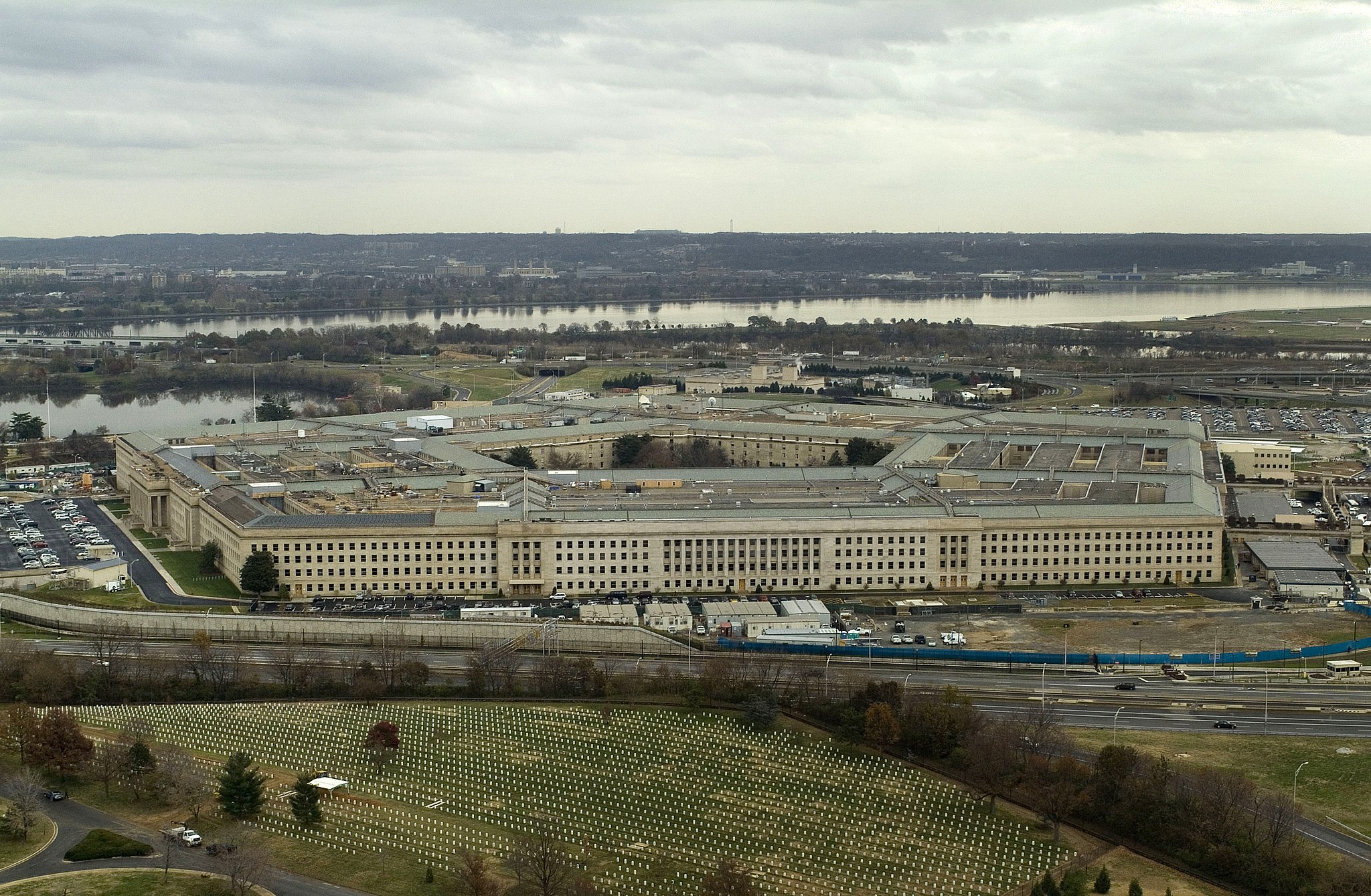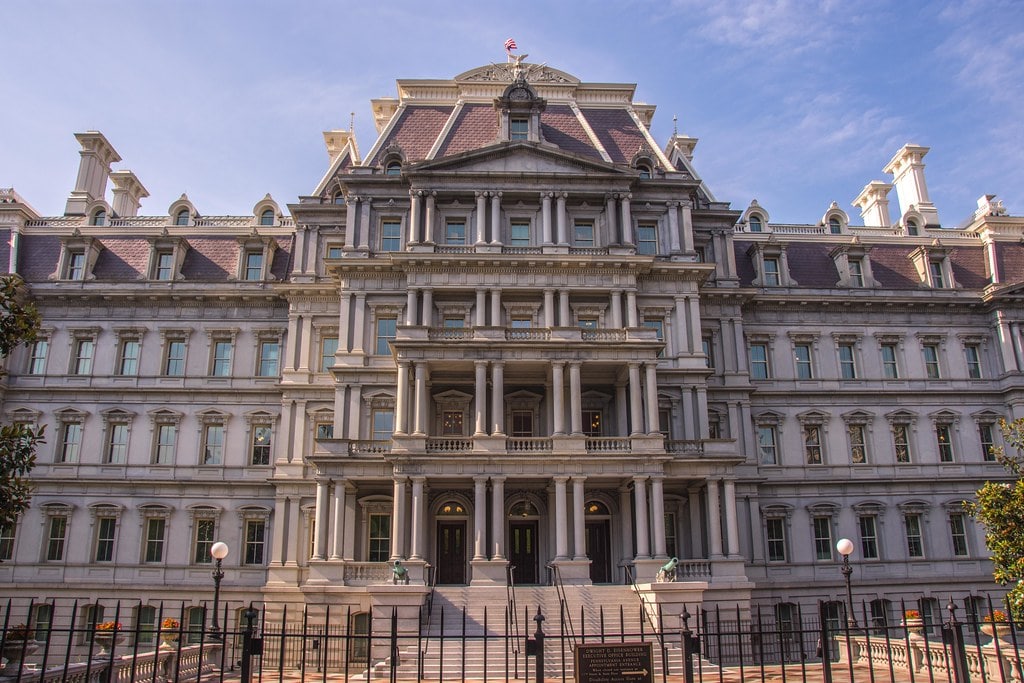How Appropriations Are Transforming the Defense Department’s Domestic Operations
Congress and the Trump administration are using appropriations law to entrench the Defense Department’s roles in migrant detention and immigration enforcement.

Published by The Lawfare Institute
in Cooperation With

Appropriations are the lifeblood of the federal government. It’s one reason why the executive branch’s claims of an ability to “impound” (i.e., withhold from use) appropriated funds are so concerning.
It’s little surprise, then, that the Trump administration’s most significant tool to cement the Defense Department’s role in deportations and border security is also appropriations law. The “big, beautiful bill” will transform the Defense Department in two ways: first, by providing an unprecedented source of multiyear funding for activities related to immigration enforcement, and second, by funding Defense Department priorities unrelated to immigration and deportation, thereby opening room for the Pentagon to redirect existing funds toward immigration and deportation support.
First, some necessary, albeit tedious, background on Defense Department appropriations. Given the size of its budget, it can be hard to see how appropriations meaningfully limit the department’s discretion. As I have discussed in these pages, however, the Defense Department’s appropriations are dictated by Congress in important ways—down to the amounts that can be spent on particular classes of ships, personnel travel, munitions, and the like. There are two sources of flexibility within this scheme of limited appropriations. First is the ability to move funds between line items within an appropriation, through what is known as a reprogramming action. This authorizes moving money, for example, between two different programs within the Army National Guard personnel account. Second is a more limited ability to move funds between appropriations through transfer authorities. This authorizes, for example, moving money between the Army National Guard’s personnel account, on the one hand, and its operation and maintenance account, on the other.
The most important transfer authority for the Defense Department is Section 8005, a recurring provision that authorizes the transfer of appropriated funds “for military functions” so long as the purposes for which the funds are being transferred are a “higher priority … based on unforeseen military requirements, than those for which [they are] originally appropriated and in no case where the item for which funds are requested has been denied by Congress.”
While Section 8005’s requirements may sound onerous, congressional and executive branch practice has significantly diminished their bite. Which is why I have argued that the most important feature of this statutory scheme for transferring funds is its numerical limit each fiscal year. For the past number of years, this limit was $6 billion.
Confusingly, Defense Department appropriations acts don’t account for all the appropriations of the Defense Department. Certain functions of the U.S. Army Corps of Engineers, primarily their civil water-management operations, are appropriated separately. The same is true for military construction projects, defined under 10 U.S.C. § 2801 as “any construction, development, conversion, or extension of any kind carried out with respect to a military installation.” The law governing military construction is, even for the Defense Department, particularly byzantine. To boil it down, military construction projects require two sets of legal authorities. The first is an authorization (usually contained in a Military Construction Authorization Act, typically enacted as part of the annual National Defense Authorization Act) to do a particular military construction project. This does the hard work of providing specific direction about the construction projects the Defense Department can undertake. The second is an appropriation to fund this already authorized construction. Since the specific projects are authorized elsewhere, these appropriations are pretty much lump sums of money given to particular Defense Department components for a set period of years.
Much like with Defense appropriations generally, Congress has also given the Defense Department two sets of tools for exercising some discretion in the world of military construction. The first is a set of statutes that authorize military construction when it has not otherwise been authorized by Congress. One such example is 10 U.S.C. § 2808, which provides that the secretary of defense can authorize military construction projects to respond to a declaration of war or national emergency. It was under this authority that Trump, in his first term, built a border wall on certain military installations. Trump made this authority available again in his executive order declaring a national emergency at the southern border at the beginning of this term. Another example is 10 U.S.C. § 2803. This provides that the Defense Department can authorize military construction not otherwise authorized if:
(1) … the project is vital to the national security or to the protection of health, safety, or the quality of the environment, and (2) … the requirement for the project is so urgent that deferral of the project for inclusion in the next Military Construction Authorization Act would be inconsistent with national security or the protection of health, safety, or environmental quality as the case may be.
In addition to various reporting requirements, military construction under § 2803 is limited to no more than $50 million per “secretary concerned” (more on this below).
Second, Congress provides flexibility in how the Defense Department can execute military construction projects. Notably, 10 U.S.C. § 2853 provides narrow authority to increase or decrease both the scope of work and amounts allocated for particular military construction projects.
Since the inauguration, the Trump administration and Congress have used this convoluted edifice of law to entrench Defense Department support to immigration and detention operations. The first move came back in March, when the full-year appropriations act increased the $6 billion transfer cap to $8 billion. This significantly increased the Defense Department’s ability to repurpose appropriated funds for unanticipated expenditures. And there have been a number of very expensive, unanticipated expenditures related to domestic military deployments. The Defense Department now has operational control over one-third of the U.S. southern border. This is expensive. By March 12, the Defense Department expended $328 million to support U.S. Customs and Border Protection at the southern border. As of April 1, the Defense Department had spent $40 million to detain migrants at Guantanamo Bay. At the beginning of June, the acting Defense Department comptroller testified that the military deployment to Los Angeles will cost around $134 million. Some of these expenses have been covered by the existing $1.1 billion appropriation for the Defense Department’s counternarcotics activities for fiscal year 2025 (itself in line with such spending in the Biden administration). But these figures considerably understate the costs that the Defense Department continues to incur. News reports indicate that the administration is preparing for more significant transfers, in the range of $1 billion, to backfill the funds spent on these unplanned missions. This far more substantial transfer is possible only because of the newly enacted $8 billion limit.
The second move came at the end of May, when the Defense Department invoked 10 U.S.C. § 2803 to repurpose a total of $200 million to build a 30 foot tall “permanent protective barrier” (i.e., border wall) on Marine Corps Air Station Yuma, in Arizona. Citing President Trump’s executive order demanding “full operational control” of the southern border, the Defense Department asserted that border wall construction “is vital to national security and deferral of the project for inclusion in the next Military Construction Authorization Act would be inconsistent with national security.” The congressional notification documents provide no rationale other than this recitation of the statutory requirements. This use of § 2803 maximizes its use this fiscal year—recall that the statute allows a “secretary concerned” (here, the secretaries of defense, army, navy, and air force) to spend no more than $50 million on § 2803 construction. To fund this border wall construction, the Defense Department identified “savings” in other projects. Some of these “savings” came from projects that, under 10 U.S.C. § 2853, the department decreased in scope—in some cases, to nothingness, thereby effectively canceling the projects.
The third, and most significant, move came with the “big, beautiful bill.” Section 20011 of the bill appropriates $1 billion:
for the deployment of military personnel in support of border operations, operations and maintenance activities in support of border operations, counter-narcotics and counter-transnational criminal organization mission support, the operation of national defense areas and construction in national defense areas, and the temporary detention of migrants on Department of Defense installations, in accordance with chapter 15 of title 10, U.S. Code.
This appropriation is transformational. Although the Defense Department has long had a counterdrug appropriation, this is the first that I am aware of specifically for border security and immigration detention. It also provides incredible flexibility—these funds are available for four years (not unprecedented, but relatively uncommon for operational funds) and are not tied to a particular existing or planned mission. This slush fund completely undercuts whatever resistance the Defense Department has been able to put up, until now, to requests from the Department of Homeland Security for immigrant enforcement support. I don’t want to overstate how meaningful this resistance has been—the Defense Department is already doing a lot. But an additional $1 billion in funding is significant, even given the fact that Congress gave the Department of Homeland Security unprecedented sums for deportations, border walls, and policing.
This appropriation is also transformational in a second, more subtle, way. In addition to the $1 billion for immigration matters, the bill provides billions of dollars for a wide range of Defense Department programs and, importantly, military construction projects. Some of these military construction projects appear to overlap with those that media reports indicate are on the chopping block to make way for the Defense Department’s immigration and border missions. These cuts, and subsequent transfers again under the increased transfer authority, are now much more palatable than they were before the “big, beautiful bill.” It is also possible that some of these additional appropriations will backfill projects downsized to fund the construction of the border wall in Yuma (it is almost impossible to tell, as the Defense Department, in some of the documents used to inform Congress of the construction, notes only that the funds came from “savings” associated with unspecified military construction projects).
There are already hints that this pattern is continuing in the budget for fiscal year 2026, currently before Congress. The draft Defense Department appropriation (already out of the Appropriation Committee’s Defense Subcommittee) increases the counterdrug appropriation to $1.14 billion—an increase from the $1.11 billion appropriated as part of the regular budget for this fiscal year and $200 million over what the Trump administration requested. I suspect that even this $1.14 billion appropriation will increase. The original budget proposal was sent when the House version of the “big, beautiful bill” contained a $5 billion appropriation for immigration and border security activities. I would not be surprised if the White House relied on this $5 billion figure when formulating its fiscal year 2026 budget proposal and would now be looking for more.
***
In Federalist No. 58, James Madison wrote that Congress’s power of the purse is “the most complete and effectual weapon with which any constitution can arm the immediate representatives of the people, for obtaining a redress of every grievance, and for carrying into effect every just and salutary measure.” And the Constitution recognizes that this power is particularly important with respect to the armed forces. It provides, for example, that appropriations “to raise and support” the Army cannot be for longer than two years (I’ve written before about how the executive and legislative branches have conspired to rid this two-year limit of any practical meaning). Writing in support of this mechanism as a tool for restraining a standing army, Alexander Hamilton wrote that a two-year limit would force “public attention [to] be roused and attracted to the subject, by the party in opposition; and if the majority should be really disposed to exceed the proper limits, the community will be warned of the danger, and will have an opportunity of taking measures to guard against it.”
Congress is abetting the Trump administration in abandoning these limits. In the process, it will institutionalize the transformation of the Defense Department’s role within the United States.




